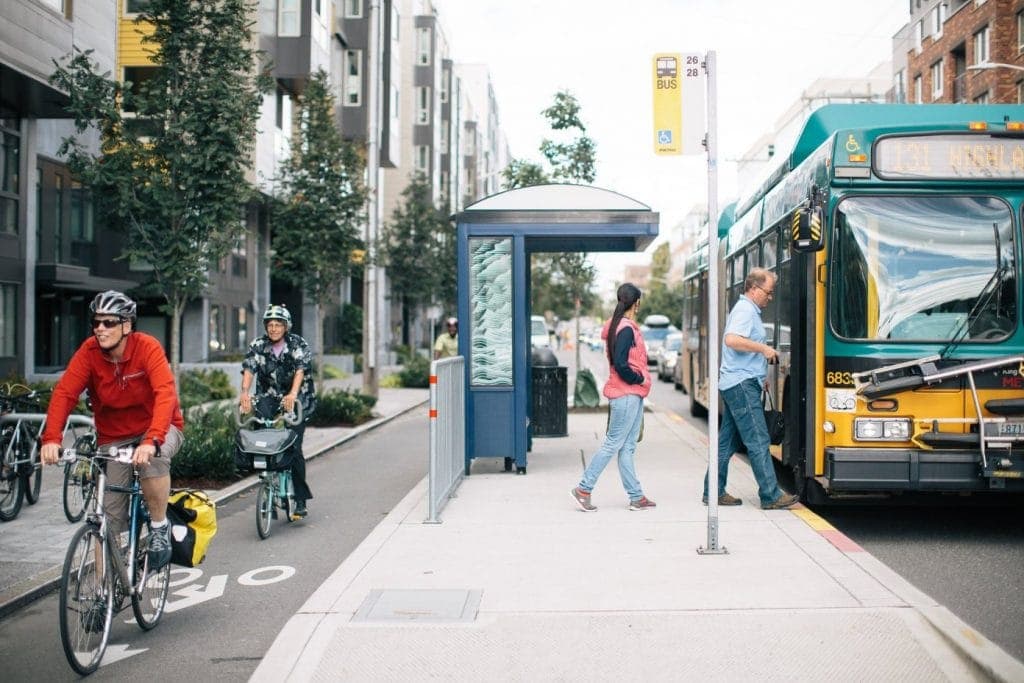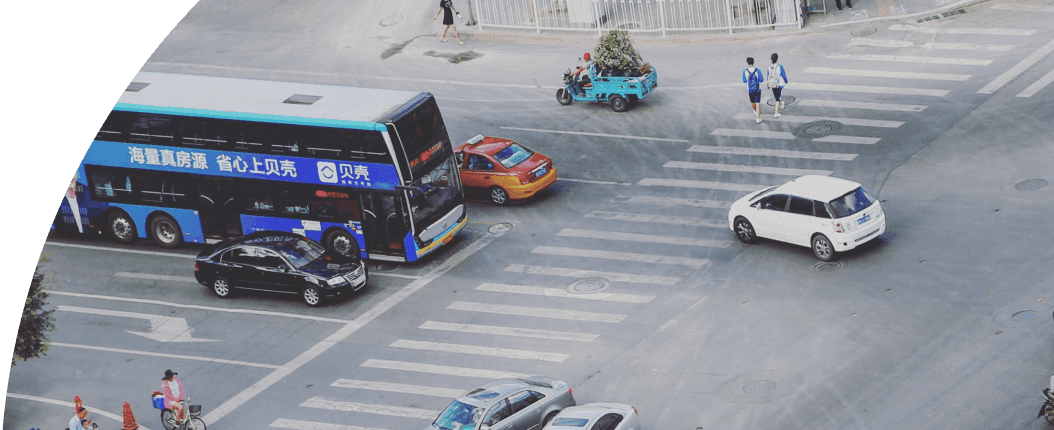
News
By Dustin Robertson, May 1, 2024
How do you know if a community is benefiting from passing and implementing a Complete Streets policy? Our new guide offers strategies for effectively measuring the impact of Complete Streets.
What happens after your community passes a Complete Streets policy? How do you know if you are achieving your community’s vision? How can you be sure you are making progress in an efficient and equitable way? These are common and important questions for practitioners implementing one of the over 1,700 Complete Streets policies across the U.S. Our new report, From Policy to Practice: A Guide to Measuring Complete Streets Progress helps tackle these questions by showing how local agencies can effectively measure their Complete Streets work and what advocates should look for to hold them accountable.
Three key metrics
To identify best practices for implementing and evaluating a Complete Streets policy, we convened an advisory committee of experts from a variety of backgrounds and locations and hosted discussion groups with representatives from 14 communities with some of the strongest Complete Streets policies in the country. Based on these conversations, we provide three categories of metrics to help measure Complete Streets in a way that can be easily tracked, communicated, and addressed. They are:
- Process: Funding measures, accountability, community engagement
- Implementation: Infrastructure projects, network creation, places & destinations, parking
- Impact: Access, economy, safety & public health, usage, public perception
100 ways to measure
Every community is different, and, as such, every community has a different vision for Complete Streets. Their metrics should match that vision. We offer 100 different measures that practitioners can choose from to assess Complete Streets. In addition, we give real-world examples of cities and towns that are leading the way in Complete Streets and explore some of the best practices for measuring success.
A Complete Streets policy is only as good as the change it fosters to create safe, accessible, and equitable communities. The guidance and metrics included in this report should be seen as a menu for communities to consider as they evaluate how well their Complete Streets policy is serving them. We hope that the examples described in the report will inform decision-makers and anyone interested in Complete Streets about the best ways to measure their progress.
Note that the terms “metrics” and “measures” are sometimes used interchangeably, but in our report, we use “metrics” to refer to the three main categories and subcategories listed above. “Measures” refers to the 100 options practitioners can use to track these metrics.
Want to learn more? Dive deeper with:
- A blog post from advisory committee member Ken McLeod on how the importance of measuring and tackling speed
- A blog post from advisory committee member Amanda Merck on what the Complete Streets movement can learn from public health
- In-depth case studies on the Complete Streets efforts in Baltimore and Milwaukee, whose reporting methods are highlighted throughout the report
- A Complete Streets Policy Action Guide created in partnership with CityHealth
Related News

© 2025 Smart Growth America. All rights reserved
Site By3Lane Marketing















